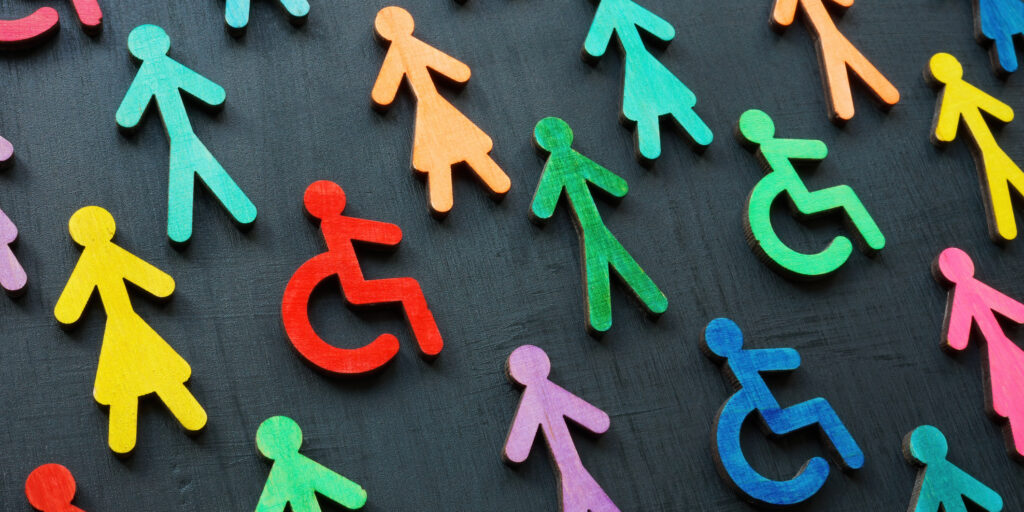
Hacking COVID: MDA Staff Edition
By MDA Staff | Thursday, June 18, 2020
In April, MDA fielded a survey to ask its community how COVID-19 was impacting their lives. We heard your responses — anxiety, questions, hope — and wanted to know more. In this six-part blog series, Hacking COVID, people from MDA’s community, all living with neuromuscular diseases, shared how they’ve altered their day-to-day lives, how they’ve “hacked” situations like getting groceries and receiving assistance, how they’ve maintained contact and safety in an uncertain time.
MDA encourages all families to follow the guidelines put forth by the U.S. Centers for Disease Control and Prevention. Access our latest news and resources on our COVID-19 resource page.
Today, MDA staff members who live themselves with neuromuscular disease tell us about life lately.
Sandra D. Young, 57, lives with late-onset Pompe disease. She is MDA’s national manager of foundations and resides alone in Sewell, NJ.
How has the threat of COVID-19 changed your day-to-day routine?
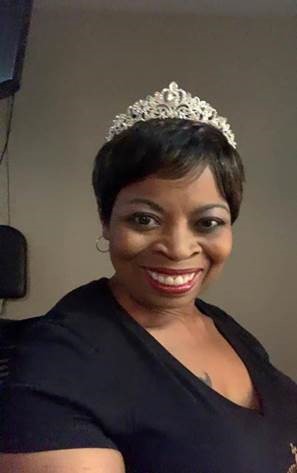
Sandra celebrated her birthday this year over Zoom.
I live alone, so my day-to-day routine has not changed when I am inside my home. When it became evident that there was a pandemic happening, and because my underlying medical condition [puts me at high risk], I had to change the frequency of my outside-of-the-home activities. I venture out only once a week to run errands and purchase staple items for home. I have family members who live nearby — my mother, sister, brother, and niece — but we are all practicing social distancing. There is no physical contact, and we wear masks and gloves during our very brief encounters.
How have you adapted to those changes? What tricks have you discovered to make things work?
Online shopping has always been a way of life for me, so I shop online more now than ever. I order my groceries and household items online and I go and pick them up. There is no contact; they load your trunk and you drive off. When I bring my groceries in the house I wear gloves and clean everything thoroughly with disinfectant wipes before putting everything away (even cardboard containers), and I wash my produce (which I’ve always done). After I put everything away, I take off the clothing that I had on to go out, put it in the laundry, take a shower, and put on clean clothes. This may sound extreme, but it makes me feel better about not bringing outside elements into my home.
What has been the hardest change?
The hardest change is not being able to interact with my family like I’m used to. I cannot hug my mother or kiss and hug my 6-year-old nephew; it’s just too risky. I’m afraid for them and for me.
How have you been coping?
I believe that it’s just as important to take care of your mental health as well as your physical health. Although talking through rough moments with friends and family is comforting, I find that seeing my therapist regularly provides more clarity and gives me some coping tools that I can’t get from my friends and family. I see my therapist once a week. I keep a journal to write down my thoughts so I can go back and reflect and compare.
I do activities that make me happy. For example, I am a lover of all music. It soothes me and keeps me company. I also buy myself flowers once a week. My favorites are sunflowers. I find that keeping my home office well-lit lifts my mood. I have a coral accent wall that my desk is facing. It’s a cheerful color.
My greatest coping mechanism is just to keep busy. I purchased a condominium right before the pandemic, so I keep busy with little decorating projects, organizing closets, etc. There is always something at home for me to do. When the weather is a bit warmer, I look forward to sitting on my patio with a glass of wine and some music.
What new routines might you keep in place beyond the COVID era?
I’m sure that I speak for a lot of people when I say that COVID will forever change how I move through life. I will continue to be more careful and cautious about where I go, what I touch, how I deal with being in crowds, traveling by plane (I’m not sure when I’ll be ready to do that again). It has also changed my personal relationships, some for the better, and some for the worse. I appreciate those who I love more, and the simple gestures that I probably took for granted (like a hug) mean so much more to me now, especially since they’ve been taken away. I just appreciate life more.
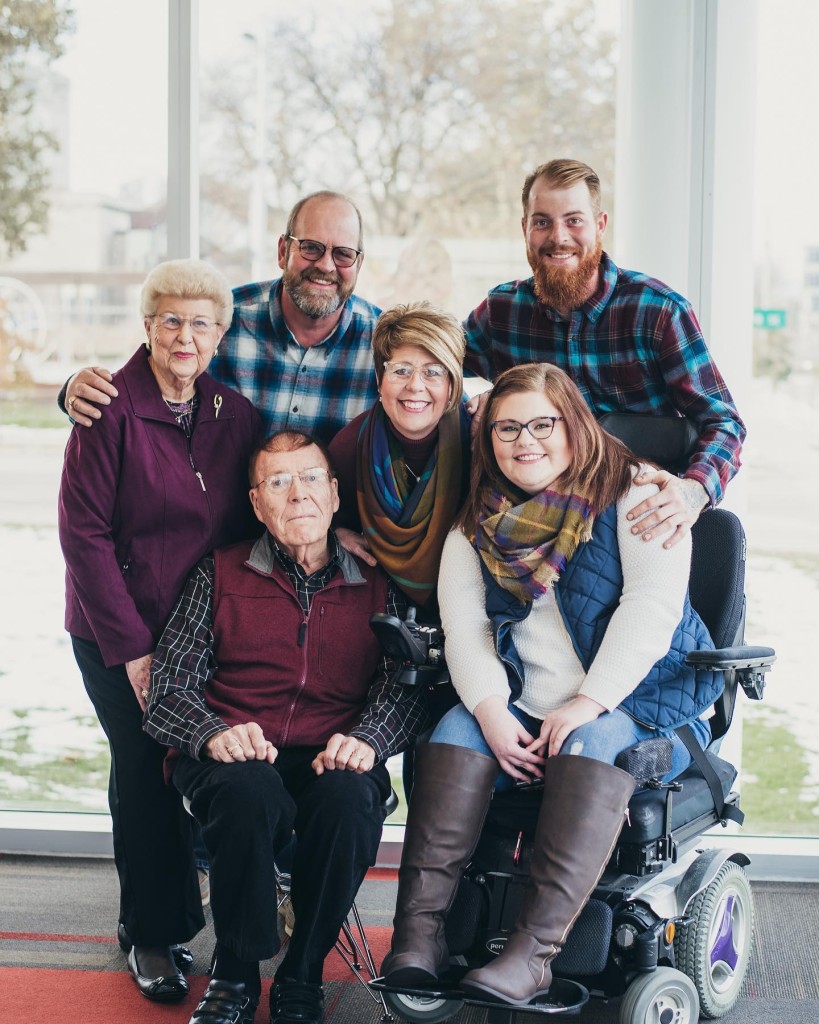
Ashleigh Peska and family members.
Ashleigh Peska, 31, lives with limb-girdle muscular dystrophy (LGMD) type 2C. She is a resource specialist in MDA’s National Resource Center and resides alone in Chicago, Ill.
How has the threat of COVID-19 changed your day-to-day routine?
Because I live alone, I rely on the assistance of a home health agency. I am fortunate that my agency hasn’t closed down and is still allowing my “helpers” to come in and assist me. However, this is a concern that I have. My family lives 30 minutes from me and my mom works full-time and is unable to assist me should [my assistance become unavailable]. The threat of COVID-19 has also made me reschedule important doctor visits.
Along with COVID-19 comes quarantine and the feelings of being lonely and not being able to see family or friends.
How have you adapted to those changes? What tricks have you discovered to make things work?
Things I have done to adapt to quarantine are doing more online grocery shopping and having it delivered directly to my home. [I’ve had] tons of FaceTime phone calls with family and friends.
What has been the hardest change?
The hardest change is not being able to leave my home and not being able to see family or friends.
How have you been coping?
I remind myself that this will hopefully not last forever. I am gracious with myself and allow myself to be frustrated, as these are hard times. I am able to keep myself busy. I am thankful that I get to work in the MDA National Resource Center while also attending graduate school.
What new routines might you keep in place beyond the COVID era?
A new routine that I hope to keep beyond the COVID era is to remain in close contact with friends who I may not have been as close to prior.
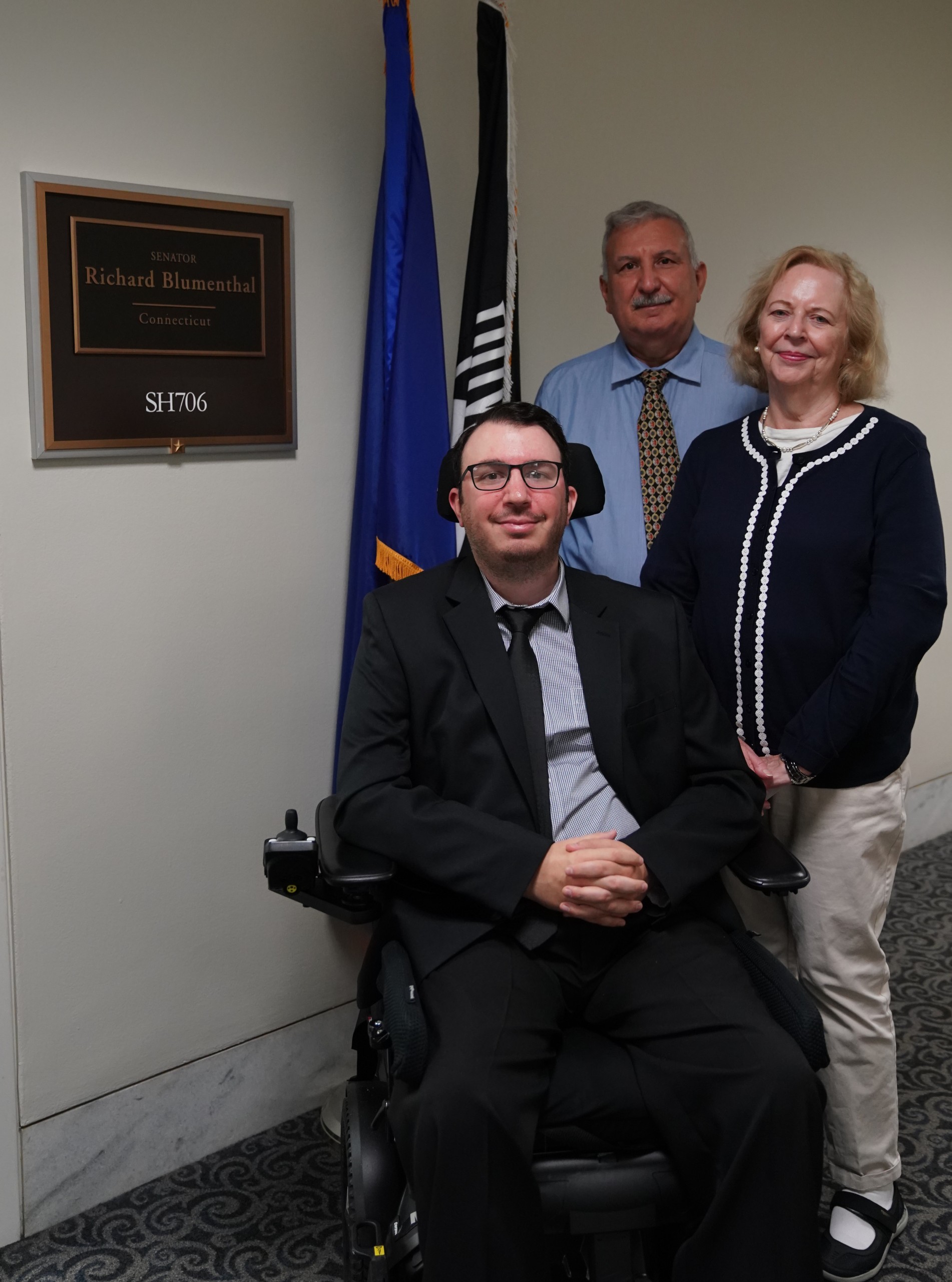
Chris and his parents at the 2019 MDA Public Policy and Advocacy Conference.
Chris Anselmo, 33, lives with LGMD type 2B, aka Miyoshi myopathy. He is a market intelligence manager for MDA and lives with his parents in Connecticut.
How has the threat of COVID-19 changed your day-to-day routine?
In terms of my day-to-day routine, it hasn’t changed it too much. I am home a significant portion of the time to begin with, so that part hasn’t changed. However, my parents make fewer trips to the store, and every time they leave to go somewhere, there is the anxiety of going out in public and the risks involved with that. That part isn’t fun.
I usually get to go to a few conferences a year for work, but that has stopped because of the pandemic. I looked forward to these longer trips as a counterbalance to being home a lot of the time. So I miss the chance to do that.
How have you adapted to those changes? What tricks have you discovered to make things work?
Work-wise, we utilize video conferencing much more than we used to. I actually see my coworkers more now than I did pre-coronavirus. That is a nice change. Outside of work, my routine hasn’t changed all that much. I try to occupy my time and stay busy with productive tasks and not dwell on all that is going on, which is much easier said than done. When this all started, I was watching way too much news and it was giving me a lot of anxiety. I have cut down on my news intake and am reading a lot more to get myself away from my computer and the TV.
What has been the hardest change?
The hardest change is not being able to go anywhere. Even though I was home a lot to begin with, I always had the option of going somewhere, or of attending work trips. Now that has been taken away for the foreseeable future. I don’t know how long I’ll be at home. I am not sure I’ll even feel comfortable going out in public until there is a vaccine. It’s just not worth the risk.
How have you been coping?
I go for a lot of walks, or whatever the wheelchair equivalent of a walk is. I am spending as much time outside as I can, when the weather cooperates. The tranquility is therapeutic.
And as I said before, I am reading a lot more to get myself away from the computer and TV. I still watch the news but watch significantly less of it than I used to. That has helped a lot with anxiety. Some things are out of our control, and there is no use in dwelling on them further.
I am also trying to write more.
What new routines might you keep in place beyond the COVID era?
I think I’ve found the right balance of how much news to consume each day, where I still am informed on what’s going on without going overboard. And cutting down on social media.
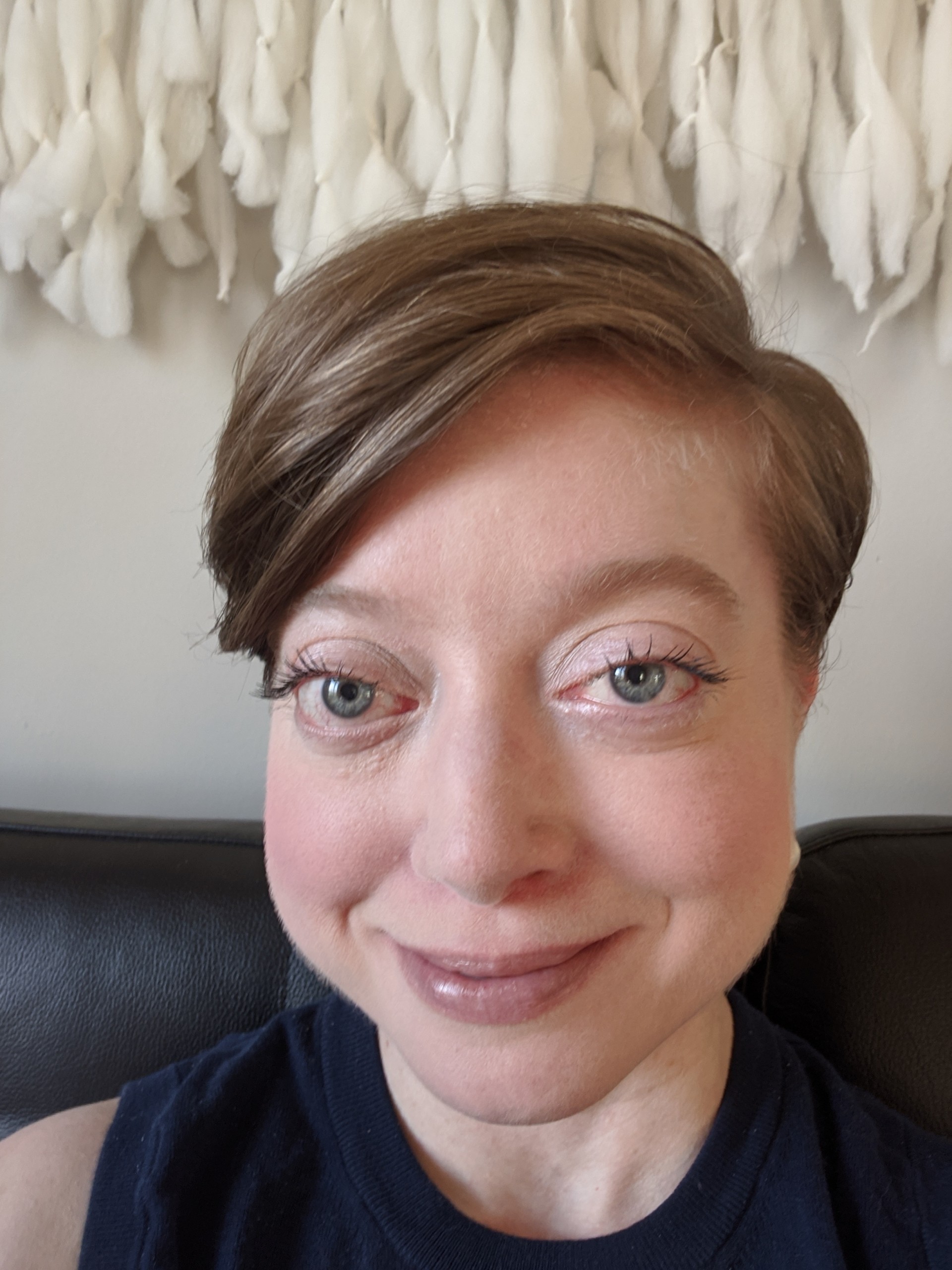
Lindsey Baker
Lindsey Baker, 38, lives with Charcot-Marie-Tooth disease (CMT). She is editor-in-chief of MDA’s Quest Magazine and resides alone in Omaha, Neb.
How has the threat of COVID-19 changed your day-to-day routine?
At the outset of my quarantine in March, I would’ve said, “not much.” I’ve worked remotely since 2016, the same year I stopped driving, so being at home alone for stretches is not unusual for me. But a few weeks in, I realized life was, actually, quite different; I haven’t gone to meetings, poetry readings, concerts, dinners with friends, family gatherings. I haven’t plucked my own produce from grocery store shelves. I haven’t touched another person or had my hair cut or seen my acupuncturist or taken an Uber. I realized my world, which I used to see as small and worked to grow, is actually quite big. It was a proud realization, and then a painful one.
How have you adapted to those changes? What tricks have you discovered to make things work?
I’ve started getting up earlier. I work out or do yoga (in a chair, with a YouTube video) nearly every day, have breakfast, get ready. I dress in “regular” clothes. I put on makeup. I have a number of video meetings daily, for MDA work and for personal work or healthcare, and creating some structure in the mornings helps me start the day with intention, which has been important in a time when time itself seems to have stopped.
I’m trying to get used to grocery delivery; previously, a friend took me out each weekend, and I made multiple stops. Now, I try to streamline orders, and sometimes I’ll stay up until midnight when new delivery times load so I can snag one. I transferred prescriptions to a pharmacy that delivers. I’ve sourced bulk options of my favorite snacks online. I’ve expanded my network of “helpers,” too, friends who’ve always offered to help and who I’ve never asked to help because that kind of asking is wearying. But in this time, it’s been bolstering: I don’t see these friends, but I see they love me. One friend drew a heart on a paper-wrapped roll of toilet paper. Another, on my birthday, left a jar of capers from one of my favorite restaurants outside my door. These things seem humble. But they’re everything.
What has been the hardest change?
Like many others, I’m missing socializing. Even things I like doing on my own, like going to concerts or to the movies, made me feel like I was active in the world. I very much now feel separated.
How have you been coping?
I’m so fortunate to have a home I love. I’ve never been bored a single day in my apartment, and that’s held true. I’m also lucky to have work that’s meaningful and challenging, which gives me a reason to get up and get dressed and dive into the day. I’ve been reading, listening to records and podcasts, watching shows, making meal plans. A couple of years ago, my therapist found a secure telehealth platform through which we could meet, so I’m able to talk to him weekly. I’ve been utilizing patient/provider email systems and telehealth through my local hospitals to stay in contact with my medical team, too (I also have type 1 diabetes, which makes COVID exposure, for me, especially risky). I joined a summer reading group that will Zoom every two weeks to discuss a four-novel series. And I’ve been checking in with — and have been checked on by — friends and family. Their calls and videos, their notes, always come when I need them (even when I don’t know I do).
A few weeks ago, I arranged with a friend to bring a few plants by; I don’t have a green thumb, but I felt like tending to something alive. When my friend brought the plants, she stayed a bit, 6 feet away, and, if not for the masks we had on and the hug we didn’t share, it was almost normal.
What new routines might you keep in place beyond the COVID era?
I’d like to keep up my exercise routine (which is perhaps slightly balancing my “who cares? Let’s eat one more chocolate” routine). I also like getting dressed for the day — and keeping the weekend strictly sweatpants. I hope my plants stay green and bright, healthy under my curious fingertips. I hope we all stay healthy, and tell each other that hope, and mean it the way we have. We’re all we have.
Disclaimer: No content on this site should ever be used as a substitute for direct medical advice from your doctor or other qualified clinician.




